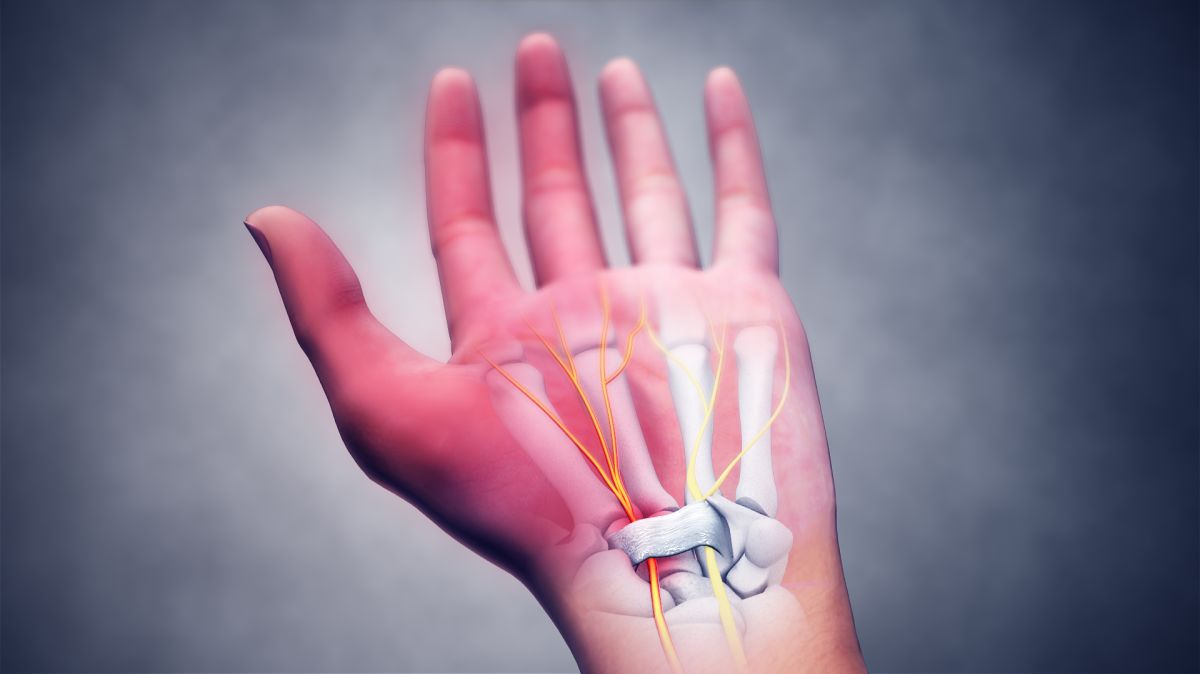Hands and Feet

Increased fluid volume and the hormone relaxin are responsible for most physical changes and symptoms related to the hands and feet during pregnancy.
The hands can itch, swell, and potentially turn red in color due to blood vessel changes in the hands, while the wrists can experience nerve pain.
Feet can swell and feel sore due to increased weight and a change in walking pattern during pregnancy. Foot size can also increase – sometimes permanently – but only a size or two.
Women should read more below to understand why these changes occur and what signs and symptoms are important to bring to the attention of an HCP.
Background
The physical changes of pregnancy, led by hormones, touch almost every part of the body to include the hands and feet.
More than 50% of women report swelling of the hands, feet, ankles, and legs, along with unsteady gait, increased foot size, dry skin of the hands and feet, itchiness, and roughened nail texture.
Hormones and Increased Fluid
The hormone relaxin influences all joints of the body, even in the fingers. For example, one study determined that even the joint of the index finger has a significant increase in laxity during the last trimester of pregnancy compared to after pregnancy.
Relaxin starts to show its effects as early as 6 weeks of pregnancy and peaks around 12 weeks.
Mild swelling of the hands and feet is caused by fluid increase (blood volume) during pregnancy. The inability to wear a wedding band, high heels, or sandals is common. This increased fluid volume and swelling can also put pressure on nerves and joints, causing pain, and is assessed to play a role in potential development of carpel tunnel syndrome (CTS) during pregnancy.
Further, relaxin may cause inflammatory changes in the transverse carpal ligament, increasing its size, which causes additional impingement of the median nerve.

Tingling and numbness in the fingers and wrists can occur during any trimester and may result from CTS, which is estimated to affect up to 60% of pregnant women. Symptoms usually go away after delivery; temporary relief may be felt by changing positions or shaking the affected hand/wrist.
In severe cases of CTS, surgery may be required. However, most HCPs will wait at least a few weeks postpartum to determine if symptoms are relieved as built up fluid decreases.
Red, itchy palms and soles of the feet (palmar erythema) are caused by an increase in microvasculature (tiny blood vessels) and changing hormone levels that affect the function of the skin; the condition goes away after delivery.
Pregnant women who experience red and itchy palms and soles of the feet should call their HCP for assessment, as well as for help with symptom control.
Palmar erythema may also be a result of genetics, or due to liver issues in which the liver cannot quickly metabolize the large quantity of estrogen and progesterone produced during pregnancy.
Symptoms are reported to occur more often in pregnant women with rheumatoid arthritis, diabetes, thyroid problems, and gestational syphilis.
Foot Size and Walking Pattern
An accumulation of fluid and soft tissue, together with loosening of joints, changes the actual structure of the foot that leads to an increase in foot size during pregnancy – sometimes permanently; there is no evidence this can be prevented.
Even in women whose foot size returns closer to pre-pregnancy size, the foot rarely reverses its changes even at six weeks postpartum, illustrating that more than just fluid retention is to blame.
Laxity and looseness of the ligaments results in a decrease in arch height which flattens the foot and contributes to a longer overall foot length.
At least two studies have illustrated that these changes occur as early as the first trimester and affect the volume, length, width, and height of the foot.
These foot changes are most pronounced with the first pregnancy and less evident with subsequent pregnancies; there is not much evidence that each pregnancy continues to expand the foot to a noticeable level.

In addition to the anatomical changes of the foot, there are also changes in gait pattern (the way someone walks) during pregnancy. Further, a sudden change of pressure on different parts of the foot can cause increased soreness of the feet and ankles near term.
The center of pressure on the foot shifts backward to compensate for increased abdominal weight. Pregnant women also tend to walk slower, with more steps taken for the same distance. Women will also use their heels more to make contact, with less forefoot pressure and greater overall load bearing.
Action
If women experience severe itchiness of their hands or feet, or significant joint or nerve pain or numbness, they should call their HCP.
Women should try to keep their feet up occasionally to reduce swelling and soreness. Foot massage can also (temporarily) improve swelling and lessen pain. Women should also try to avoid standing or sitting for long periods of time.
Women can read Swelling, Blood Volume, Skin (Itching), and Back and Spine for more information.
Resources
Carpel Tunnel Syndrome (American Academy of Orthopaedic Surgeons)